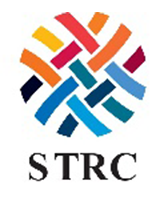The theme for the 2016 Southern Textile Research Conference (STRC) was “Sustainability”. The conference began with Keynote Address from Dr. Harold Freeman from NC State University entitled, “Molecular Design of Sustainable Textile Colorants”. Dr. Freeman’s presentation reviewed the advantages and disadvantages of natural vs. synthetic dyes. Dr. Freeman presented a case study in which a dye was found in river water to have mutagenic properties, and which structural features of the dye led to its mutagenicity.
Dr. Richard Spontak from NC State University made a presentation on, “Supramolecular Nonwovens”. Nanofibers can be engineered to form crystalline structures that are then manipulated in such a way as to grow them into structures resembling biological fibrous systems.
Chris Aurich from Gaston Systems spoke on, “The Importance of Foam”. Foam technology is a sustainable alternative to traditional wet processes such as dyeing and finishing because it provides substantial water and energy savings. Foam can be used on a variety of substrates, including denim, nonwovens, carpeting, upholstery, and a variety of fabrics. The Oasis Process for sustainable pretreatment and dyeing of cotton fabrics was reviewed.
Mary Ankeny from Cotton Incorporated spoke about, “Sustainable Cotton Pretreatment”. She reviewed research on rapid exhaust bleaching, near-neutral/low temperature bleaching, lower liquor ratio bleaching, as well as the use of enzymes for sustainable bleaching. Liquid ammonia pretreatment for knits was also discussed.
Dr. Matt Farrell from Cotton Incorporated made a presentation on recent developments for sustainable dyeing and finishing of cotton. He reviewed recent reactive dyeing developments, new chemicals for non-formaldehyde durable press finishing, no-fluorine water repellents, enzymatic bleaching of denim, and use of laser etching of denim to replace more labor intensive abrasion.
Dr. Orlin Velev from NC State University presented research on, “Environmentally Friendly, Liquid-Based, Scalable Manufacturing of Nanofibers and Novel Nonwovens”. By control of shear, unique nanoparticles and dendrimers can be manufactured. Some properties such as antibacterial, self-cleaning, ultra-hydrophobic, and magnetic can be produced.
Dr. Warren Jasper from NC State University spoke about, “Using Lean Six-Sigma in Sustainable Dyeing Manufacturing”. Six sigma can be used to reduce defects and improve shade repeatability. Lean six sigma reduces waste and improves efficiency by optimization of water, energy, dyestuff, and time.
Terry Turner from Unifi discussed the benefits of recycled polyester. There are several options for recycling polyester, including mechanical, chemical, and energy recovery. By recycling polyester bottles into fibers, less oil is taken out of the total system to manufacture virgin polyester. Mr. Turner provided a thorough review of the recycling options available.
